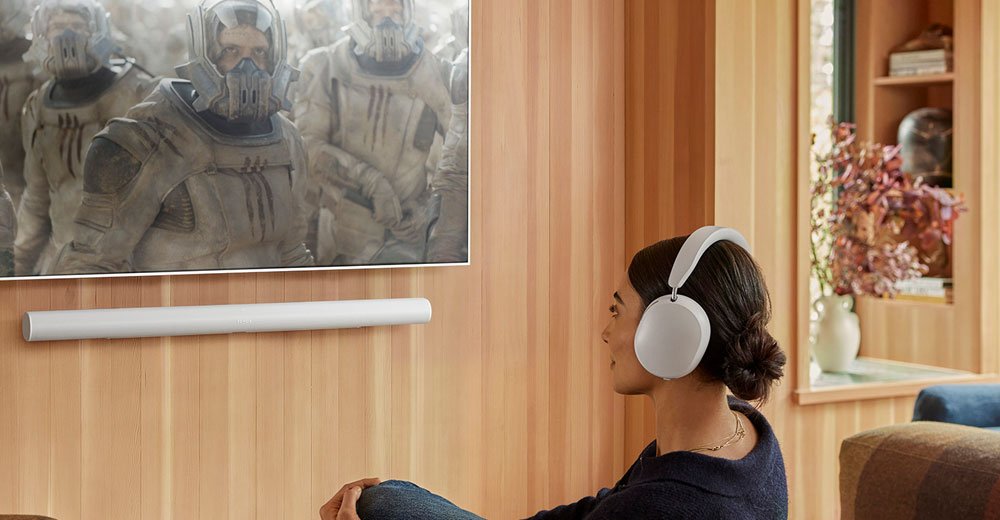As a longtime user of the original Sonos Arc, I approached the new one Sonos Arc Ultra with excitement and skepticism.
The original Arc was a staple in my home entertainment setup. It delivers impressive Dolby Atmos sound and seamlessly integrates with the Sonos ecosystem.
With the Arc Ultra promising upgrades in sound quality, design and connectivity, I was eager to see if it could live up to the hype and justify its higher price tag.
After spending time with the Ultra, it’s clear that Sonos hasn’t just refined its flagship soundbar; they’ve reimagined what a standalone audio system can offer. But is it enough to entice existing Arc users like me to take the plunge? Let’s dive in.
Released on October 29th, the Sonos Arc Ultra is Sonos’ latest flagship soundbar. It costs $999 and is available in black or white.
This new release marks a slight price increase over its predecessor, the original Arc, which is being discontinued and is now being sold at discounted rates as retailers clear out remaining inventory.
The Arc Ultra enters a competitive market, facing rivals such as the Sony Bravia Theater Bar 9 and the Samsung HW-Q990D. Both offer compelling features and sometimes significant discounts.
Design and build
Visually, the Arc Ultra is very similar to the original Arc, retaining Sonos’ minimalist aesthetic with a perforated grille that encloses most of the chassis. However, subtle changes include a list on the back of the touch controls – play/pause, skip, volume rocker and a voice control button – which has been moved from the main grid.

The soundbar’s dimensions have been tweaked just as slightly: it’s wider at 118cm (down from 114cm) but shorter in height at 7.5cm (down from 8.7cm), reducing the likelihood of obstructing the TV screen when placed before. Weighing around 350g less than its predecessor, the Arc Ultra is also more wall mount friendly.
The design requires an open placement, as positioning it in a corner or under a shelf can obstruct the upward drivers that are essential for optimal sound distribution.
Features and connectivity
The Arc Ultra boasts a 9.1.4 channel configuration, a significant upgrade from the original Arc’s 5.0.2 setup. It features 14 custom drivers powered by 15 Class D amplifiers, including seven tweeters, six midrange woofers and a new Sound Motion woofer.
This innovative woofer uses four smaller, lightweight motors to move the cone, allowing for greater air displacement and delivering up to twice the bass of the original Arc, according to Sonos. The double cone design also aims to minimize mechanical vibrations, contributing to a more balanced sound profile.
Despite these advances, the Arc Ultra lacks support for DTS audio formats, focusing only on Dolby Atmos for surround sound. Connectivity options remain limited, with a single HDMI eARC port and no dedicated HDMI inputs, requiring all external sources to be connected through the TV. This setup can present challenges for users with multiple high-spec gaming devices and limited HDMI 2.1 ports on their TVs.

Sonos Arc Ultra home theater soundbar: front view (pictured above) and back view
On top of that, the Arc Ultra introduces Bluetooth connectivity (a first for Sonos soundbars) and extends Sonos’ excellent Trueplay calibration support to Android devices, improving user accessibility.
Achievement
In terms of sound performance, the Arc Ultra delivers a clean, precise and spacious soundstage with impressive three-dimensionality. The enhanced bass is deep and expressive and provides a solid foundation without overwhelming the overall sound profile.
Dialogue clarity has improved, thanks to the new front-dedicated speaker array dedicated to the center channel, ensuring crisp and intelligible speech reproduction. The soundbar excels in detail retrieval, capturing subtle nuances across various content types.
However, the absence of HDMI pass-through and DTS support may be limiting for some users. Additionally, while the Sonos app offers robust control and customization options, some users have reported occasional issues that can affect the overall user experience.
How Arc Ultra stacks up against competitors
Compared to competitors such as the Sony Bravia Theater Bar 9 and the Samsung HW-Q990D, the Arc Ultra holds its own in terms of sound quality and design.
Although officially priced higher, the Sony Bravia Theater Bar 9 often sees discounts that bring it closer to the Arc Ultra’s price point. The Bravia Theater Bar 9 boasts a comprehensive feature set, including HDMI passthrough and support for both Dolby Atmos and DTS:X formats, offering greater flexibility for users with diverse content sources.
Although more expensive, the Samsung HW-Q990D includes a wireless subwoofer and surround speakers, delivering a more immersive surround sound experience out of the box. The connectivity options are more extensive, with multiple HDMI inputs and support for various audio formats, making it a versatile choice for users looking for a comprehensive home theater setup.
Is Arc Ultra worth the upgrade?
To be sure, Sonos has long faced criticism for its app, which, while offering a sleek design and robust control options, was plagued by occasional connection issues and limited flexibility.
Users often report frustrations with delayed updates, problems adding new devices, and problems syncing across the ecosystem. This woe is especially frustrating given the premium price of Sonos products, which set high expectations for seamless integration.
While recent updates aim to address some of these issues, the app experience still leaves room for improvement, especially as competitors continue to refine their platforms. While I’ve suffered through some of these issues myself (especially with Sonos’ terrific over-the-ear Ace headphones), the app has thankfully grown to the point where it didn’t hamper the setup.
Still, from a pure hardware standpoint, the Sonos Arc Ultra represents a significant advance over its predecessor, offering improved bass performance, improved dialogue clarity, and a more immersive soundstage.
Its sleek design and extensive connectivity options, including Bluetooth and broader Trueplay support, make it a compelling choice for users looking for a high-quality, all-in-one soundbar solution. However, the lack of HDMI passthrough and DTS support may be a consideration for potential buyers.
Overall, the Arc Ultra is an excellent soundbar that elevates the home audio experience, making it a worthy contender in the premium soundbar market.
The Arc Ultra images featured in this article are credited to Sonos.
+++++++++++++++++++
Ready to Sell
AISKILLSOURCE.COM










